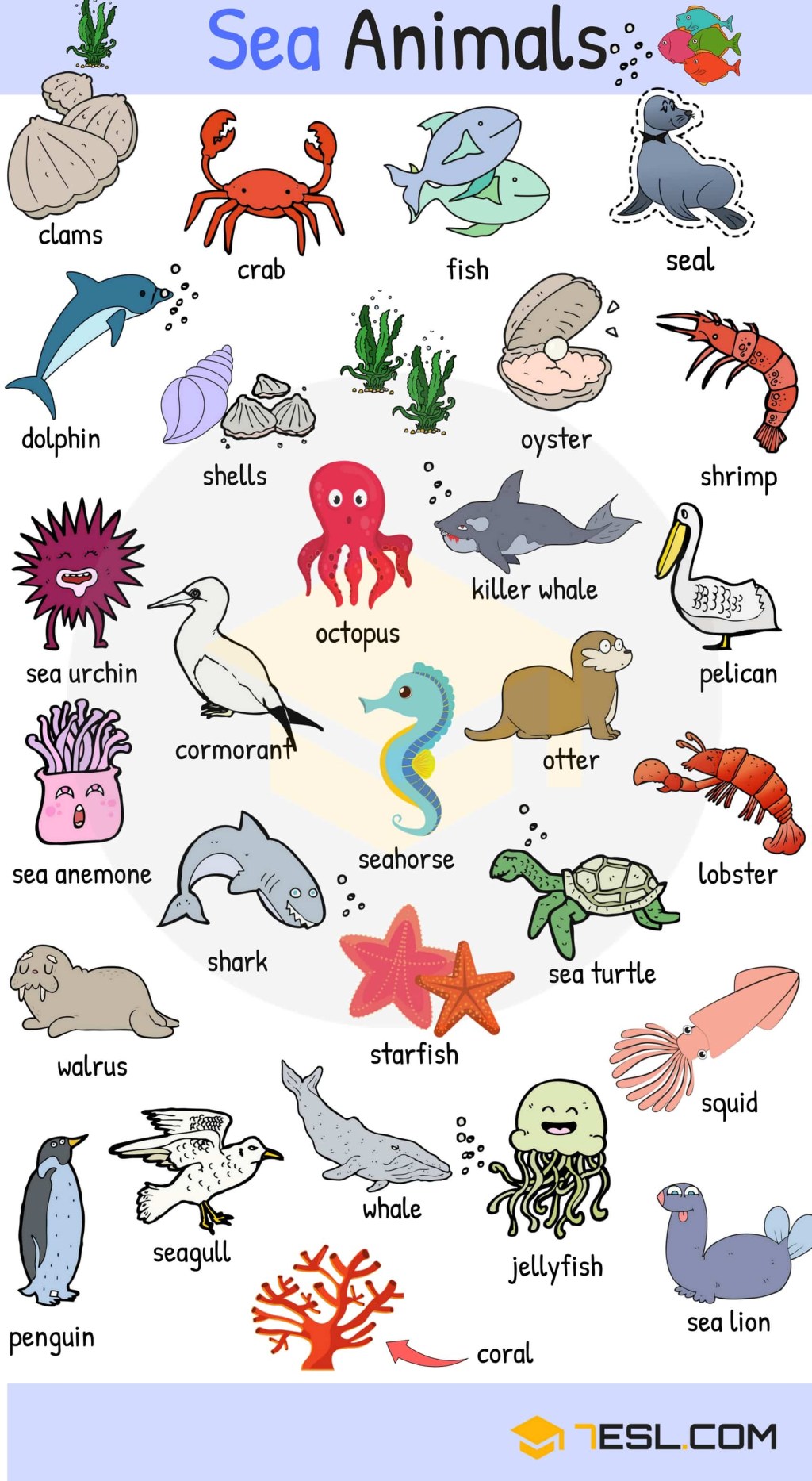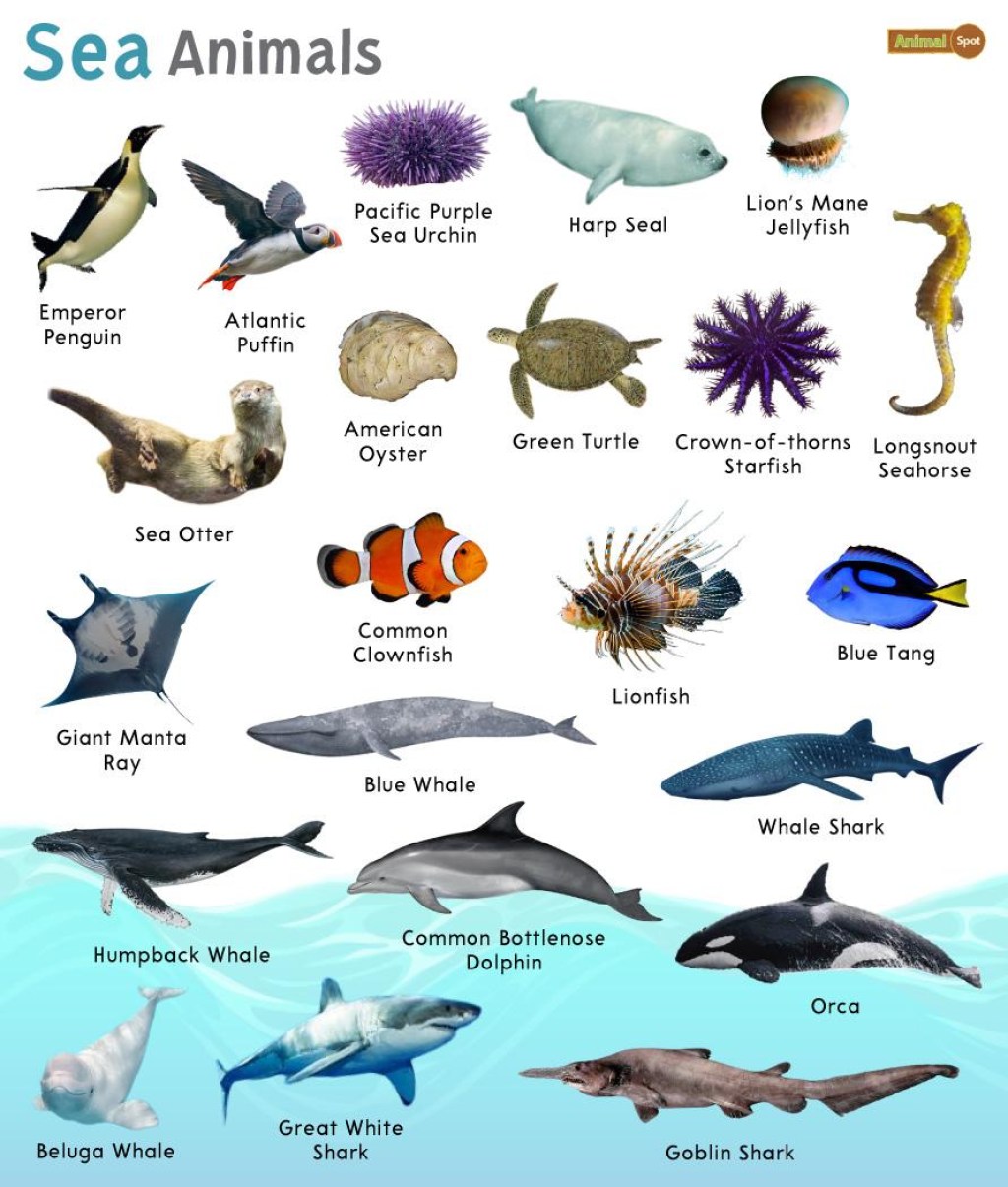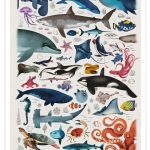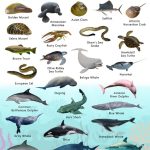Discover The Fascinating Ocean Wildlife Names: Dive Into An Underwater Adventure!
Ocean Wildlife Name: Exploring the Wonders of the Deep
Introduction Paragraph:
3 Picture Gallery: Discover The Fascinating Ocean Wildlife Names: Dive Into An Underwater Adventure!



The ocean is a vast and mysterious place, teeming with life that has captured the imagination of humans for centuries. From majestic whales to vibrant coral reefs, the ocean is home to an incredible array of wildlife. In this article, we will delve into the fascinating world of ocean wildlife and discover the diverse species that inhabit this underwater realm.

Image Source: 7esl.com
Body Paragraphs:
What:
Ocean wildlife refers to the diverse range of species that live in the world’s oceans. It includes creatures such as sharks, dolphins, turtles, jellyfish, and countless others. These animals have adapted to life in the water, developing unique features and behaviors that allow them to thrive in their marine environments.

Image Source: 7esl.com
Who:
Ocean wildlife encompasses a wide variety of species, ranging from small organisms like plankton to large mammals like whales. It is estimated that there are over one million known species in the ocean, with countless others yet to be discovered. These creatures play vital roles in maintaining the health and balance of marine ecosystems.
When:

Image Source: animalspot.net
Ocean wildlife has existed for millions of years, evolving and adapting to the changing conditions of the ocean. Some species have been around since prehistoric times, while others have emerged more recently. The survival of these animals is intricately connected to the health of the oceans, which face numerous threats such as pollution, overfishing, and climate change.
Where:
Ocean wildlife can be found in all corners of the world’s oceans, from the icy waters of the Arctic to the coral reefs of the tropics. Different species have different habitat preferences, depending on factors such as temperature, salinity, and availability of food. Some animals migrate vast distances, while others are more sedentary in their habits.
Why:
The study and conservation of ocean wildlife are essential for several reasons. Firstly, these creatures are a part of Earth’s biodiversity and have intrinsic value. Secondly, they play crucial roles in maintaining the health of marine ecosystems, such as regulating populations and recycling nutrients. Finally, ocean wildlife also has economic and cultural significance, with many communities relying on these resources for their livelihoods and traditions.
How:
Scientists use various methods to study ocean wildlife, including direct observation, remote sensing, and genetic analysis. These techniques allow researchers to better understand the behavior, distribution, and population dynamics of different species. Conservation efforts involve implementing policies and regulations to protect vulnerable species and their habitats, as well as promoting sustainable fishing practices and reducing pollution.
Transition Paragraphs:
FAQ:
Q: How many different species of ocean wildlife are there?
A: There are over one million known species, but the actual number may be much higher.
Q: Are all species of ocean wildlife endangered?
A: No, while some species are endangered, others are thriving. Conservation efforts are crucial to protect vulnerable species.
Type:
Ocean wildlife encompasses a wide range of organisms, including fish, mammals, birds, reptiles, and invertebrates. Each type has its own unique characteristics and adaptations that enable them to survive in their respective marine environments.
Size:
The size of ocean wildlife varies greatly, from tiny plankton measuring just a few micrometers to massive whales that can reach lengths of over 100 feet. Some species, such as the blue whale, are the largest animals on Earth.
Material:
Ocean wildlife is composed of living organisms made up of biological materials such as tissues, organs, and skeletal structures. These materials allow them to perform essential functions such as swimming, feeding, and reproducing.
Specs:
Each species of ocean wildlife has its own unique specifications, including physical characteristics, dietary preferences, habitat requirements, and reproductive strategies. These specifications determine how a species interacts with its environment and other organisms.
Requirement:
The main requirement for ocean wildlife is a suitable habitat that provides them with the necessary resources to survive, including food, shelter, and breeding areas. Some species have specific requirements, such as coral reefs for certain fish species or polar ice for polar bears.
Tips:
When observing ocean wildlife, it is essential to practice responsible wildlife viewing. This includes maintaining a safe distance, avoiding disturbing the animals or their habitats, and following any regulations or guidelines in place.
Trick:
One trick for spotting ocean wildlife is to look for signs such as seabirds diving or groups of fish jumping out of the water. These can indicate the presence of larger predators such as dolphins or sharks.
Benefit:
The existence of ocean wildlife provides numerous benefits to humans. They contribute to the overall health and productivity of the oceans, provide sources of food and income for communities, and offer recreational and educational opportunities for people.
Disadvantage:
One disadvantage of ocean wildlife is the potential for negative interactions with humans. This includes incidents such as shark attacks or entanglement of marine animals in fishing gear. However, these occurrences are generally rare and should not overshadow the importance of conserving and protecting these species.
Price:
The monetary value of ocean wildlife is difficult to quantify. However, it is estimated that the global economic value of marine ecosystems is in the trillions of dollars, highlighting their importance for various industries such as tourism, fishing, and pharmaceuticals.
Discount:
There are no discounts available for ocean wildlife, as their protection and conservation should always be a priority.
Pros and Cons:
The pros of ocean wildlife include their ecological roles, economic and cultural value, and aesthetic appeal. However, the cons include the threats they face from human activities, such as overfishing, pollution, and climate change.
Conclusion Paragraph:
In conclusion, ocean wildlife is a fascinating and essential part of our planet’s biodiversity. Exploring the wonders of the deep sea reveals a world of stunning beauty and intricate ecological interactions. It is our responsibility to protect and conserve these precious creatures for future generations to enjoy. By understanding the importance of ocean wildlife and taking action to address the threats they face, we can ensure the continued survival and thriving of these magnificent species. Let us celebrate and appreciate the diversity of ocean wildlife and work together to safeguard their future.
This post topic: Ocean Wildlife


